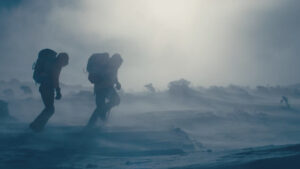From stuffing pigeons into missiles to discovering that animals can breathe through their anuses, the 2024 Ig Nobel Prize awards have no shortage of headline-grabbing studies.
The ignoble Nobel prize
The Ig Nobel Prize started in 1991 and aims to “honor achievements that first make people laugh, and then make them think.” Though it is a riff on the Nobel Prize, the “ignoble” prize does recognize genuine achievements, though without the life-changing million-dollar reward. Instead, winners are given a one-trillion Zimbabwean dollar banknote, worth less than one U.S. dollar.
This year there are 10 studies recognized in 10 categories.
A team of Japanese scientists won the Ig Nobel Prize in physiology for a study that showed that mice, rats, and pigs could absorb oxygen into the bloodstream via the rectum. At first blush, this might not sound like a particularly useful discovery, however, researchers hope that “enteral ventilation” could help treat human patients with respiratory failure. The team is now running a phase one trial with human volunteers.

A Japanese team took home the Physiology Prize. Photo: Steven Senne
The Peace Prize went to the late BF Skinner, a U.S. psychologist. His study explored placing live pigeons in missiles to guide them to their targets.
“This is the history of a crackpot idea, born on the wrong side of the tracks intellectually speaking, but eventually vindicated in a sort of middle-class respectability. It is the story of a proposal to use living organisms to guide missiles,” Skinner wrote by way of introduction to his article Pigeons in a Pelican.
Can we trust reports of extreme old age?
Saul Newman at the University of Oxford won the Demography Prize for his study looking into claims of extreme old age. Newman demonstrated that many claims of extreme old age in humans come with a host of suspect data points.
“Relative poverty and short lifespan constitute unexpected predictors of centenarian [100 years] and supercentenarian [110 years] status and support a primary role of fraud and error in generating remarkable human age records,” the study concludes. “Only 18% of ‘exhaustively’ validated supercentenarians have a birth certificate, falling to zero percent in the USA.”
The Medicine Award went to a mixed Swiss/German/Belgian team for their study that involved a (rather terrifying) twist on the placebo effect. Researchers found that medicine that causes side effects can be more effective than medicine that does not.
The Chemistry award went to a Dutch team that separated drunk worms from their sober brethren using chromatography (separating a mixture into its components) and a maze. The study aims to increase our understanding of polymer dynamics by analyzing differences in wriggle activity.
“The sad conclusion is that the drunk worms get home very late,” Woutersen said as he accepted the award.
Plant vision and the swimming abilities of dead trout
American Jacob White and German Felipe Yamashita shared the Botany Award for their potential discovery of “plant vision.” The duo found that a South American plant can mimic the leaves of plastic plants it is placed next to.
Physics went to James Liao from the University of Florida for an off-the-wall-sounding study that investigated the swimming abilities of a dead trout.
“The musculoskeletal system [of trout] is phenomenally well matched to the environment. We know this because a dead fish exhibits unnervingly similar Karman gait kinematics [an undulatory swimming motion] to a live fish, with the exception that it cannot put on the brakes. In a remarkable example of passive thrust production,” the study explained.

Do terrified cows produce less milk? The winners of the Biology Award wanted to find out. Photo: Ig Nobel Prize
Winning coin flips and scaring cows with cats
Fifty researchers shared the Probability Prize for their study on the good old coin flip. After over 350,000 coin flips, their study concluded that coins are marginally more likely to land the same way up as they started.
Finally, Fordyce Ely and William Petersen won the Biology Award posthumously for their investigation into dairy milk production. They decided to scare cows using a cat and exploding paper bags to see what would happen to the cow’s milk. Perhaps unsurprisingly, cows harassed by a cat on their back and subject to exploding bags produced less milk.






